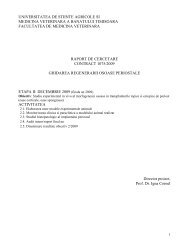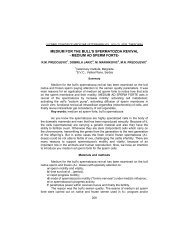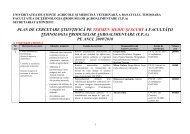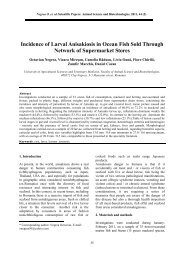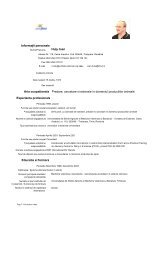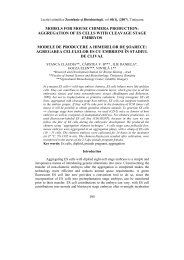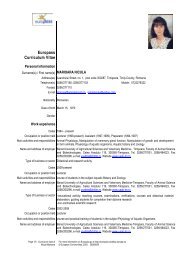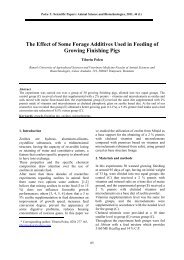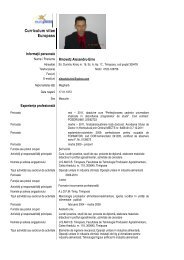journal of linguistic studies
journal of linguistic studies
journal of linguistic studies
You also want an ePaper? Increase the reach of your titles
YUMPU automatically turns print PDFs into web optimized ePapers that Google loves.
ENGLISH PLANT NAMES CONTAINING AN ANIMAL NAME<br />
AND THEIR ROMANIAN COUNTERPARTS<br />
ASTRID SIMONE GROSZLER<br />
BUASVM, Timişoara, Romania<br />
mone_stern@yahoo.co.uk<br />
BILJANA IVANOVSKA<br />
University Goce Delcev, Stip, FYR <strong>of</strong> Macedonia<br />
biljana.ivanovska@ugd.edu.mk<br />
ABSTRACT<br />
The paper approaches horticultural terminology by analysing English common<br />
plant names. We are interested just in those plant names which are formed with<br />
the help <strong>of</strong> animal names. We are not only trying to establish the connection<br />
between the English concepts and the Romanian ones in terms <strong>of</strong> equivalency.<br />
The paper tries to analyse terms that observe a Romanian counterpart as well as<br />
the ones that do not.<br />
Keywords: Terminology; Plant Names; Animal Names; Common Name<br />
6. INTRODUCTION<br />
The purpose <strong>of</strong> this paper is to observe the way in which English plant names which<br />
are formed with the help <strong>of</strong> animal names are represented in the Romanian language. By<br />
that we mean to observe not just whether or not these particular English plant names have<br />
a Romanian equivalent, but also how many <strong>of</strong> these equivalents observe the choice <strong>of</strong> the<br />
animal name instead <strong>of</strong> just giving a semantic equivalent.<br />
In terms <strong>of</strong> equivalency, we think it useful to extend on the concept. In Baker (2001),<br />
we find a definition <strong>of</strong> equivalency as “the relationship <strong>of</strong> a source text (ST) and a target<br />
text (TT) that allows the TT to be a translation <strong>of</strong> the ST in the first place. Equivalence<br />
relationships are also said to hold between parts <strong>of</strong> STs and parts <strong>of</strong> TTs. […] equivalence<br />
is commonly established on the basis <strong>of</strong>: the source language (SL) and target language<br />
(TL) words supposedly referring to the same thing in the real world, i.e. on the basis <strong>of</strong><br />
their referential or denotative equivalence; the SL and TL words triggering the same or<br />
similar associations in the minds <strong>of</strong> native speakers <strong>of</strong> the two languages, i.e. their<br />
connotative equivalence; the SL and TL words being used in the same or similar contexts<br />
in their respective languages, i.e. what Koller (1989) calls text-normative equivalence; the<br />
SL and TL words having the same effect on their respective readers, i.e. pragmatic<br />
(Koller 1989) or dynamic equivalence (Nida 1964); the SL and TL words having similar<br />
orthographic or phonological features.”<br />
Another concept that comes up is textual equivalence, defined as the combination <strong>of</strong><br />
similarities in ST and TT information flow and the cohesive roles <strong>of</strong> ST and TT devices<br />
in their respective texts. We may speak <strong>of</strong> functional equivalence when we deal with the<br />
translator’s decision as to which consideration to be taken into account at any time.<br />
Even though we cannot speak <strong>of</strong> actual text in the case <strong>of</strong> plant names, we still have<br />
to take into account the definitions presented above, because the same translation rules<br />
25



